
Nanophotonics pioneer Naomi Halas celebrated as newest University Professor
Rice celebrated Naomi Halas’ promotion to University Professor, the institution’s highest academic rank, during a presentation and reception March 22.

Nanophotonics pioneer Naomi Halas celebrated as newest University Professor
Rice celebrated Naomi Halas’ promotion to University Professor, the institution’s highest academic rank, during a presentation and reception March 22.

People, papers and presentations for March 13, 2023
Assistant Professor of Physics and Astronomy Ming Yi has won the 2022 Outstanding Young Researcher Award, or Ardentic Prize, from the International Organization of Chinese Physicists and Astronomers, a New York-based non-political, not-for-profit organization that promotes physics and astronomy research and achievements by ethnic Chinese physicists and astronomers.

Theory can sort order from chaos in complex quantum systems
Theory can sort ‘order’ from ‘chaos’ in complex quantum systems.

Rice joins neutrino megaproject. Engineering launches energy transition initiative. McHugh lands cancer research grant. Keck Foundation funds quantum research. West named Cottrell Scholar.
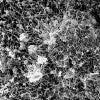
Potential for profits gives Rice lab’s plastic waste project promise
Rice University scientists create carbon nanotubes and other hybrid nanomaterials out of plastic waste using an energy-efficient, low-cost, low-emissions process that could also be profitable.
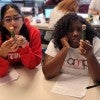
Black girls benefit most when STEM teachers train up
When middle and high school teachers in science, technology, engineering and mathematics pursue continuing professional development, their students benefit, and a new study from Rice University shows the payoff can be dramatic.
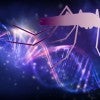
Mosquito’s DNA could provide clues on gene expression, regulation
Rice University researchers discover that the Aedes aegypti mosquito’s DNA has the physical properties of a liquid crystal, a unique feature not found in any other species that could provide new clues on the factors that govern gene expression and regulation.
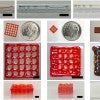
Peptide 3D-printing inks could advance regenerative medicine
How do you build complex structures for housing cells using a material as soft as Jell-O? Rice University researchers have the answer with a new 3D-printing ink.
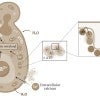
Molecular machines could treat fungal infections
Rice scientists show that light-activated nanoscale drills can kill pathogenic fungi.

Rice lab uncovers dynamics behind protein crucial in breast cancer
Just as a puppeteer moves a puppet by manipulating its strings, estrogen receptors, which play a crucial role in breast cancer, work in similar ways when they facilitate the interaction between hormones and DNA, according to Rice scientists.
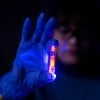
Rice scientists’ discovery could lead to new Alzheimer’s therapies
A new approach to the study of amyloid-beta, a peptide associated with Alzheimer’s disease, has led Rice University scientists to findings that could have a significant impact on the understanding and potential treatment of the disease.

Naomi Halas named University Professor
Rice University has promoted nanotechnology pioneer Naomi Halas to its highest academic rank, University Professor. Halas, a 33-year member of Rice’s faculty, becomes only the 10th person and second woman to earn the title in Rice’s 111-year history.
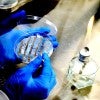
New enzyme could mean better drugs
Biomolecular engineers at Rice University identified a new enzyme that catalyzes the Nobel Prize-winning Diels-Alder reaction.

Nanoparticles make it easier to turn light into solvated electrons
Chemists from Rice, UT Austin and Stanford have uncovered the long-sought mechanism of a light-driven process that creates solvated electrons, inherently clean chemical reactants that are attractive for green chemistry.
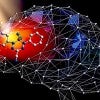
New fluorescent dye can light up the brain
Rice chemist Han Xiao and Stanford researcher Zhen Cheng have developed a tool for noninvasive brain imaging that can help illuminate hard-to-access structures and processes. Their small-molecule dye is the first of its kind that can cross the blood-brain barrier, allowing researchers to differentiate between healthy brain tissue and a glioblastoma tumor in mice.